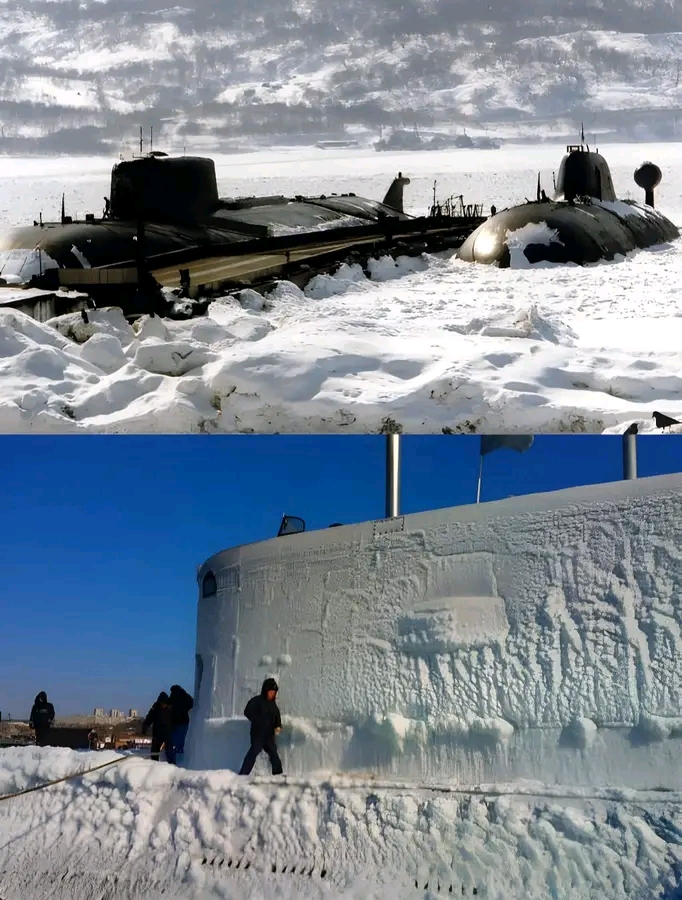How does Russian Submarines break through Arctic Ice?

Russian Navy submarines are designed to operate in the harsh Arctic environment, including breaking through thick ice cover. Here are some ways they achieve this:
1. Specialized hull design: Russian submarines have a unique hull design that allows them to withstand the crushing pressure of ice. The hull is reinforced with thick steel plates and has a special shape that helps to distribute the

pressure evenly.
2. Icebreaker propellers: Some Russian submarines, like the Akula-class and Typhoon-class, are equipped with icebreaker propellers. These propellers are designed to break through ice up to 2 meters (6.6 feet) thick. They work by using a combination of suction and pressure to create a channel through the ice.
3.

Diesel-electric propulsion: Russian submarines typically use diesel-electric propulsion systems, which allow them to operate quietly and efficiently. This type of propulsion also enables them to generate power for their ice-breaking systems.
4. Specialized ice-breaking techniques: Russian submariners have developed specialized techniques for breaking through ice.

They use a combination of speed, maneuverability, and careful navigation to avoid getting stuck in thick ice.
5. Sonar and sensors: Russian submarines are equipped with advanced sonar and sensor systems that allow them to detect and avoid underwater hazards, including icebergs and ice ridges.
Here are some impressive examples of Russian submarines breaking through Arctic ice:

In 2012, the Russian Navy's Akula-class submarine, K-152 Nerpa, broke through 1.5 meters (4.9 feet) of ice in the Arctic Ocean.
In 2019, the Typhoon-class submarine, TK-208 Dmitri Donskoi, successfully navigated through 1.2 meters (3.9 feet) of ice in the Arctic Ocean.
In 2020, the Russian Navy's Lada-class submarine, K-317 Pantera, broke through 2 meters (6.6 feet) of ice in the Barents Sea.

These remarkable feats demonstrate the impressive capabilities of Russian submarines in navigating the challenging Arctic environment.












